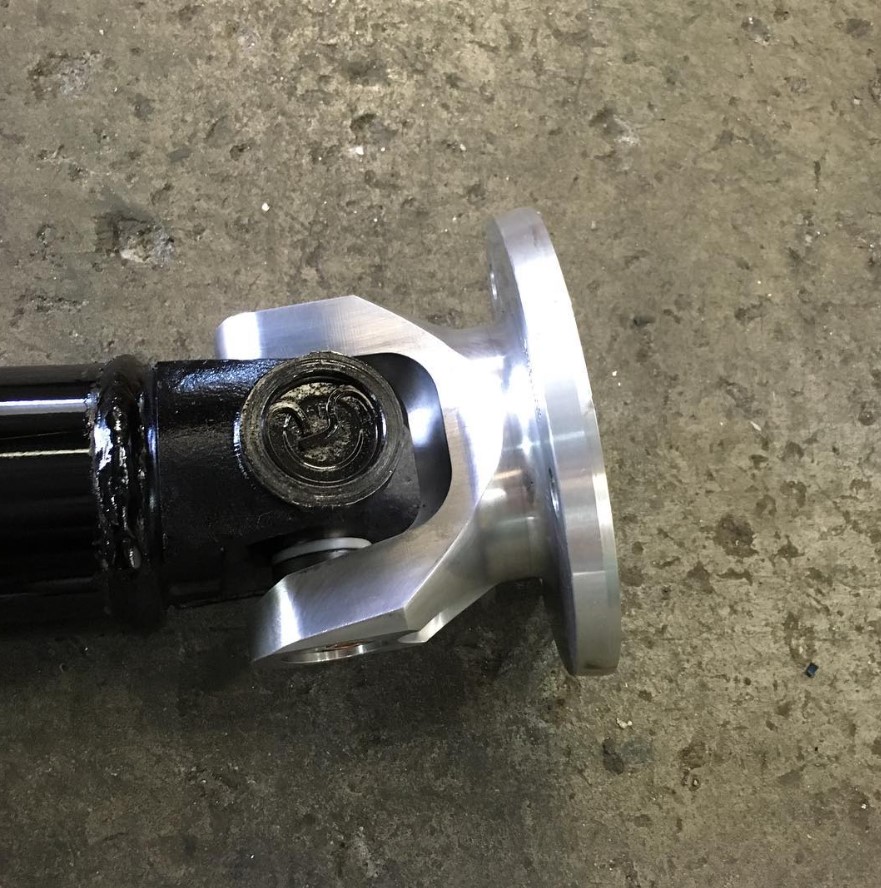No products in the cart.


Choosing the right tailshaft is crucial for your vehicle’s performance.
But with options like performance and industrial tailshafts, how do you make the right choice?
Let’s break it down to help you find the best fit for your needs.
Performance tailshafts are designed for speed and agility.
Made from lightweight materials such as carbon fibre, aluminium, or chromoly, these tailshafts reduce weight and enhance efficiency.
They’re perfect for car enthusiasts who want improved acceleration and handling on the road or track.
Industrial tailshafts are built for strength and durability.
They’re ideal for heavy-duty applications like towing or operating machinery.
Typically made from robust materials like steel or heavy-duty alloys, these tailshafts can handle rigorous use and extreme conditions without compromising performance.
Deciding between performance and industrial tailshafts depends on how you use your vehicle:
Understanding the differences between performance and industrial tailshafts helps you make an informed choice:
Ultimately, the right tailshaft depends on your driving needs. Whether you’re looking for enhanced speed or heavy-duty reliability, knowing the differences between performance and industrial tailshafts helps you make the best decision.
Upgrade your vehicle with the perfect tailshaft from the GJ Drivelines Online Store. Explore our wide range of performance and industrial tailshafts to find the perfect match for your vehicle. Our experts are here to help you every step of the way.
Visit our online store now to discover the ideal tailshaft for your needs and take your driving experience to the next level.
Choosing the right tailshaft is crucial for your vehicle’s performance.
But with options like performance and industrial tailshafts, how do you make the right choice?
Let’s break it down to help you find the best fit for your needs.
Performance tailshafts are designed for speed and agility.
Made from lightweight materials such as carbon fibre, aluminium, or chromoly, these tailshafts reduce weight and enhance efficiency.
They’re perfect for car enthusiasts who want improved acceleration and handling on the road or track.
Industrial tailshafts are built for strength and durability.
They’re ideal for heavy-duty applications like towing or operating machinery.
Typically made from robust materials like steel or heavy-duty alloys, these tailshafts can handle rigorous use and extreme conditions without compromising performance.
Deciding between performance and industrial tailshafts depends on how you use your vehicle:
Understanding the differences between performance and industrial tailshafts helps you make an informed choice:
Ultimately, the right tailshaft depends on your driving needs. Whether you’re looking for enhanced speed or heavy-duty reliability, knowing the differences between performance and industrial tailshafts helps you make the best decision.
Upgrade your vehicle with the perfect tailshaft from the GJ Drivelines Online Store. Explore our wide range of performance and industrial tailshafts to find the perfect match for your vehicle. Our experts are here to help you every step of the way.
Visit our online store now to discover the ideal tailshaft for your needs and take your driving experience to the next level.
Chrysler – Dodge
727 – 30 Spline 1 11/16″ Seal Diameter
904 – 26 Spline 1 9/16″ Seal Diameter
Ford
C6-T56 – 31 Spline 1 11/16″ Seal Diameter
AOD & C4 & T5 – 28 Spline 1 1/2″ Seal Diameter
4 R 7OW – 28 Spline 1.598″ Seal Diameter
General Motors
T-350 700R4-4LLOE – 27 Spline 1 1/2″ Seal Diameter
T-400-4L80E – 32 Spline 1 7/8″ Seal Diameter
Note: Transmission slip yokes are manufactured with various U-Joint Series. It is important to match Horsepower and Torque requirements to U-Joint Series. For aftermarket transmission applications usually a spline count and seal diameter will identify slip yoke required.

If Pinion Yoke has Placement tabs that retain the U-Joint, measure inside tabs. See Diagram D.

If Pinion Yoke does not have Placement Tabs that retain U-Joint, measure from flat of yoke inside to inside. See Diagram E.

If 4 bolt Flange is used on pinion, measure Pilot Diameter and center to center diagonally bolt hole to bolt hole. See Diagram L.

Universal Joint Size. There are hundreds of U-Joint sizes or “Series” to accomodate many different applications of power and desired longevity for your automotive, 4×4 truck or auto racing requirements, these 4 series of joints cover most needs.
1310 Spicer Series: 1 1/16″ Cup Diameter (Dim C – Diagram A) 3 7/32″ length (Dim B – Diagram A) Certain Ford applications have 2 cups 1 1/8 Diameter. Appropriate horse power range is up to 500 in circle track or road racing, small tire drag racing and 4×4. Also available: Performance Dynamic Cryo Joint.
1330 Spicer Series: 1 1/16″ Cup Diameter (Dim C – Diagram A) 3 5/8″ length (Dim B – Diagram A) Certain Ford applications have 2 cups 1 1/8 Diameter. Slightly stronger than 1310, Used in 5.0 Mustangs. Also available: Performance Dynamic Cryo Joint.
3R Saginaw Series: 1 1/8″ Cup Diameter (Dim C – Diagram A) Retained with internal clip 2 5/8″ (Dim B – Diagram A). Most common GM joint. Horse power range up to 700 in road racing and circle track. Solid drag racing U-Joint can accomodate most sportsman classes. Also available: Performance Dynamic Cryo Joint.
1350 Spicer Series: Manufactured with OEM tolerances and treated with our Cryogenic Process to yeild the strongest U-Joint available. For drag racing applications a solid non-lube design U-Joint is recommended because of the tremendous initial shock load, or short duration of high torque the joint must be able to withstand.

If PST is supplying you with transmission slip yoke, Pinion yoke and driveshaft yoke measure Dim W. See Diagram N.
If PST is supplying you with transmission slip yoke and driveshaft measure Dim X. See Diagram N.
2 Piece driveshafts use Dim Y + Z. See Diagram N.